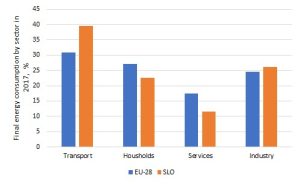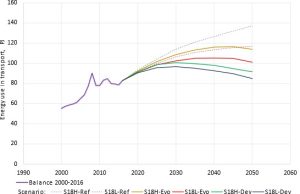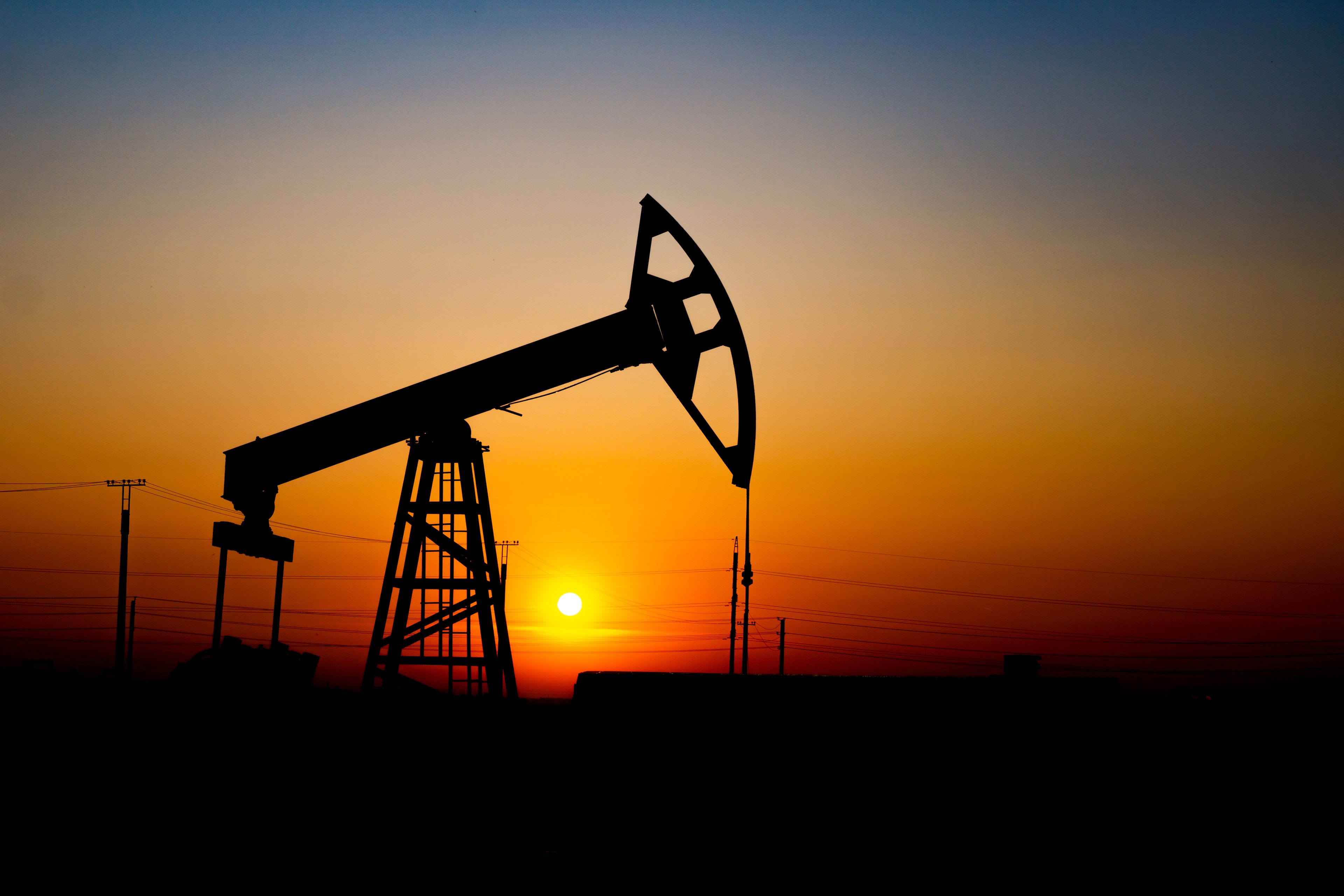The article is the result of the collaboration of several research groups from the Faculty of Mechanical Engineering, the Milan Vidmar Electro Institute, and the Faculty of Economics. The Power Laboratory LTE dealt with the industry sector, the Laboratory for Internal Combustion Engines and Electromobility LICeM dealt with transport sector and the Laboratory for Heating, Sanitary and Solar Engineering and Air Conditioning LOSK dealt with the other energy use in households and in the service sector. Modelling of the development of energy consumption until 2050 was carried out with the MEDEE simulation tool at the Milan Vidmar Electro Institute. The model also included the macroeconomic development of the Slovenian economy, which was prepared at the Faculty of Economics of the University of Ljubljana. The research results were published in the Sustainable Cities and Society (IF =10.696).
In the introductory part, an overview of energy use in Slovenia for the last typical year before the COVID-19, 2019, is discussed. Statistical data shows that Slovenia is at the level of primary energy still ~85 % dependent on fossil and nuclear energy sources with a total annual energy consumption of ~0.3 EJ (total world consumption ~606 EJ). One of the Slovenian peculiarities is that the share of energy consumption in the transport sector is still constantly increasing and is significantly higher than the average in the EU, while the share of energy consumption in industry is decreasing.

Figure 1: Final energy consumption by sectors in 2017
In the model of the development of energy consumption until 2050, three development scenarios were taken into account: reference scenario, evolutionary and developmental scenario with higher and lower economic growth. The reference scenario primarily considers only the change in the volume of production. In the evolutionary scenario, technological development, increasing energy efficiency, increasing the share of RES, etc. are considered. The development scenario is the most optimistic and represents the upper limit of technically feasible development. Consumption growth is predicted for the industry sector in all scenarios, while consumption reduction after 2030 is also predicted for the transport sector and other consumption in some scenarios.

Figure 2: Scenario forecasts of energy use in the transport sector until 2050
In the final part, Slovenian renewable energy sources, the actual situation, and the expected development until 2050 are discussed. Considering the natural conditions, photovoltaic power plants offer the greatest and still unexploited possibilities for development. But until the technology of seasonal storage at the level of a few TWh of electricity is developed, the abandonment of fossil and nuclear sources will be limited.
Link to the article: https://doi.org/10.1016/j.scs.2023.104668.
